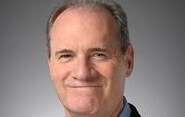Google's 57,000 results for ‘commercial real estate tsunami’ feature a common figure and a common image. The figure is $3.4 trillion, the amount of commercial real estate loans currently outstanding. A total of $2 trillion worth of loans are scheduled to mature over the next five years – $250 billion in 2010 alone.
With commercial property value losses of 30% to 40% since 2007 (with more losses anticipated), soaring cap rates and the virtual disappearance of the commercial mortgage-backed securities (CMBS) market, the effects are predicted to be monstrous.
The resulting image is of an immutable, unavoidable tidal wave, crashing into shore and sweeping real estate investors, lenders – and the economy as a whole – out to sea.
Both the numerical figure and the accompanying image contain some elements of accuracy, and the imagery is attention-grabbing. But as recent economic developments are demonstrating, forecasts are often wrong. There is a tendency to project the continuation of experiences of the recent past into the immediate future. In many cases, however, these projections simply do not apply.
Forecasters using the tsunami image do have certain truths on their side. A tsunami is a kind of wave, and commercial real estate lenders and investors are facing situations that resemble a series of waves. What they are not facing is a cataclysmic event.
Real-life tsunamis are created by enormous energy dislocations in the ocean. Underwater earthquakes and explosions set the entire water mass in motion, creating a powerful surge. Waves, on the other hand, are generated by wind passing over the water's surface.
Where, then, is the massive explosion in commercial real estate (CRE) that has set the tsunami in motion? There is the apparent disappearance of capital in the form last seen – the secondary market – and banks have been on the sidelines.
Furthermore, there is unemployment, which underpins demand and performance for various types of commercial properties. Office vacancies, for instance, are at a five-year high. Apartment vacancies are the highest they have been for 23 years, and retail vacancies are at levels not seen for 17 years.
But the forces driving these numbers are actually more benign than those that CRE weathered in the 1980s and 1990s. That time, the market had to contend with these elements plus oversupply. Now, we are facing a situation brought about by financial conditions.
Loss predictions
Most wave action takes place right on the surface, where it is most visible. Waves are formed and driven by three wind elements: the distance the wave travels over the water (fetch), and the wind's time and speed over the water. These elements, in turn, are affected by everything from changes in pressure to temperature. Change any of these elements, and the waves themselves are changed.
Waves are also affected by factors in the water itself. Shifting seabeds, currents, tides, sea grass, reefs, rivers, breakwaters and suspended particles of mud can all serve to re-channel waves or dissipate them altogether. Even if they meet the shore at full force, defenses are available to those on land. These defenses can be as simple as moving to higher ground.
CRE's future is no different. Static and dynamic forces can – and are – in play, interacting at speeds and in ways that are difficult to imagine, let alone forecast.
The wind in this instance is the economy. By some measures, the recession is over. Manufacturing activity is on the rise. Since March, the Dow Jones Industrial Average, S&P 500 and Nasdaq are up 51%, 58% and 69%, respectively. Housing sales are up, and inventories are being absorbed. Retail sales are up 4% so far this year, to 2005 levels, versus double-digit declines last year.
Jobs are always a lagging indicator. Productivity is allowing more production with fewer workers, but productivity can only hold off new hiring for so long. Inventories are low, and consumer spending is coming back. Positive job growth will return.
Unfortunately, novice sailors often overestimate the size of waves. Just how massive is the CRE refinancing overhang? The total value of all CRE in the U.S. is estimated to be $6.5 trillion. Of this total, $3.4 trillion is debt, which is distributed among commercial banks, CMBS, life insurance companies and GSEs (9%). CRE debt is relatively short term (five to 10 years) and it is often non-amortizing.
All debt, distributed across all properties, would generate an all-in loan-to-value ratio (LTV) of around 52%. LTVs on some properties are certainly much higher: A number of borrowers are underwater, just like their homeowner counterparts. But the impact has dissipated. As with homes, not all properties carry intractable mortgages.
Fitch recently reviewed $230.4 billion in unpaid balance across vintage 2006, 2007 and 2008 CMBS bonds, downgrading 20% ($44.3 billion). Spread across the three years, this downgrade could result in a 6.3% weighted loss as the loans mature. It is important to note that the analysis does not assume any recovery in the economy.
A 6.3% loss is high for commercial loans – more than three times the rule of thumb used by commercial lenders. But it is only a shadow of the losses that have been experienced in residential lending, and the economy has weathered this pounding.
The fact is, the economy as a whole is not as reliant on real estate as it was before the downturn.
Debt waves
Commercial real estate loans are scattered across a range of property types that are not perfectly correlated. Hotel loans – the high-flyers of the segment, now suffering from heavy debt loads and empty rooms – are not related to condominium loans, office loans, or loans on shopping centers. The performance of one type may have little relation to another, and could emerge stronger and at a faster pace.
Loans are also secured by properties scattered across the country. As each region recovers at a different rate, so will property values. Slow-growth areas that escaped the worst of the housing bubble or dodged major job losses, such as Washington, D.C., show lower risk. Broad-brush descriptions of nationwide CRE performance into the future can never be precise.
CRE lending growth over the past several years went to speculative construction and development loans, and these deals account for a majority of souring loans. But although these projects may now look only like half-finished properties or giant holes in the ground, they also provide the greatest opportunity for new investors to step in to finish the job.
A range of actions and initiatives create orthogonal forces to CRE debt waves. These actions include CMBS Term Asset-Backed Lending Facility (TALF) programs, which are already under way and beginning to help the market; the slow reemergence of the secondary market; and the growth of a nascent covered-bond market.
The Federal Reserve's supplying liquidity to the market through CMBS TALF is not a stand-alone solution, but it could serve to stabilize demand and provide price points for new loan originations.
As with the economy as a whole, a CRE bottom of some type seems to have been found. Floundering commercial properties are being sold at distressed levels equal to about 40% of their 2007 peaks. As prices appear to stabilize, issuers could start originating multi-loan CMBS that will not require TALF support.
In a return to the Resolution Trust Corp. (RTC) days, structured transactions and loss sharing are reemerging. Banks are also acquiring failed banks without taking on failed assets. Private equity firms are managing the assets under the auspices of the Federal Deposit Insurance Corp. (FDIC), applying the approach that works for the Home Affordable Modification Program to CRE.
Unlike residential loans, which have limited options available to them, commercial loans are relatively less rigid. Potential workouts include a wide variety of alternatives, extensions are commonplace and lenders can bolster their positions by expanding their security requirements or becoming more involved with the management of individual assets.
Extend the loan?
‘Extend and pretend’ is a time-honored solution, especially in commercial lending. It provides the most direct solution to an immediate problem. Held to maturity – or longer – CRE loans are less susceptible to mark-to-market forces.
Pushing the borrower's day of reckoning into the future is not necessarily a bad thing to do. Extensions provide time for other forces to take effect, and history has shown that most often, these forces are positive.
Banks are raising capital, cushioning themselves against losses while contributing to the gradual de-leveraging of the CRE market. They also appear to be getting bolder. Write-ups of toxic assets are taking place, enabling Citigroup and JPMorgan Chase, for example, to book accounting gains on CRE loans they hold. Valuation methods that were oversimplified are becoming more sophisticated, providing a better picture of reality.
Regulatory and tax shifts also serve to break up waves. FDIC guidelines limiting banks to lending 300% of their capital were apparently not followed, but they will be in the future. Expect increased transparency and disclosure requirements, and perhaps an expanded list of credit agencies.
The FDIC has also signaled a new emphasis on a strong workout infrastructure, focusing more on cashflow than on the collateral value of property. Re-REMIC deals are emerging, and tax treatment of loan modifications are becoming less hostile.
Even the strength of the dollar comes into play here. For foreign investors, there is a strong appeal in investing in U.S. commercial properties at bargain-basement prices, using cheap money. Tax incentives for these deals could also assist the situation.
As the so-called CRE tsunami nears the shore, its size is already noticeably less than we feared. The total volume of delinquent CRE loans fell in the second quarter of this year, signaling that loans are going bad at a slower rate.
When values stabilize, there is money available to invest. CRE is generally not overbuilt, and although vacancies are high, the sector went into the downturn with healthy occupancy levels. It's still an attractive long-term investment.
Finally, keep in mind that after a wave – even an extremely large wave – hits, it recedes. Things dry out. People rebuild. Life goes on.
Richard H. Zahm is portfolio manager of Second Angel Fund I, a commercial real estate asset-based lending fund based in Connecticut and California. He can be contacted at rz@secondangel.net.











